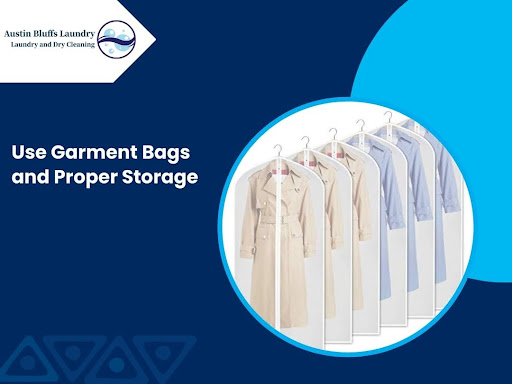As the pace and standards of life increase today many people require assistance to make their clothes long-lasting. Some critical factors that cause this problem include fast fashion trends, daily schedules, and ignorance of proper washing of clothes. Most individuals are helpful to their garments’ life span by washing them incorrectly and not availing themselves of the great boon that is professional cleaning. It is for this reason that this blog seeks to help you make practical recommendations on how to make your clothes last longer through the appropriate use of dry cleaning services.
Understand the Dry-cleaning process
Before delving into specific tips, it’s essential to understand how dry cleaning works. Unlike regular laundry, dry cleaning uses chemical solvents instead of water to clean clothes. The process begins with a pre-treatment of stains, followed by immersion in a solvent (usually perchloroethylene or a hydrocarbon-based solvent), agitation to remove dirt and oils, and finally, drying and pressing.
Knowing this process can help you make informed decisions about what garments to dry clean and how to care for them post-cleaning. For example, understanding that certain solvents are better suited for delicate fabrics can help you choose the right dry cleaner that uses appropriate methods for different materials.
1. Understand Fabric Care Labels

One of the fundamental steps in extending the life of your clothes is understanding and following fabric care labels. These labels provide essential information on how to clean and care for your garments properly.
- Know the Symbols: Fabric care labels often use symbols to indicate the appropriate cleaning methods. Familiarize yourself with common symbols for dry cleaning, machine washing, hand washing, bleaching, and ironing.
- Dry Clean Only: Some fabrics, like silk, wool, and acetate, are delicate and should be dry-cleaned only. Ignoring this instruction can lead to shrinking, stretching, or damage.
- Spot Cleaning: For minor stains on fabrics that can’t be washed at home, consider spot cleaning as a temporary solution until you can get the item dry-cleaned.
2. Choose a Reputable Dry Cleaner
Not all dry cleaners are created equal. Selecting a reputable dry cleaner can make a significant difference in maintaining your clothes’ quality.
- Research and Reviews: Look for dry cleaners with positive reviews and high customer satisfaction. Personal recommendations and online reviews can guide you in finding a reliable service.
- Specialized Services: Some dry cleaners specialize in specific fabrics or types of clothing, such as wedding dresses, suits, or vintage garments. Select a cleaner that caters to your unique requirements.
- Certifications: Check if the dry cleaner is certified by a professional organization, such as the Drycleaning and Laundry Institute (DLI), which ensures adherence to high standards.
3. Prepare Your Clothes Properly
Before taking your clothes to the dry cleaner, proper preparation can help ensure the best results.
- Empty Pockets: Make sure all pockets are empty to avoid losing items or damaging the garment.
- Note Stains: Point out specific stains to the dry cleaner and provide information about the nature of the stain if possible. This helps them use the appropriate treatment.
- Check for Repairs: Inspect your clothes for loose buttons, torn seams, or other issues. Some dry cleaners offer repair services, which can help maintain your garments’ integrity.
4. Rotate Your Wardrobe
Wearing the same clothes frequently can accelerate wear and tear. By rotating your wardrobe, you can reduce the frequency of dry cleaning and extend the life of your garments.
- Seasonal Rotation: Store out-of-season clothes properly to keep them in good condition. Store them in breathable garment bags in a cool, dry location.
- Mix and Match: Create different outfits using the same pieces. This not only keeps your style fresh but also reduces the need for frequent cleaning.
5. Use Garment Bags and Proper Storage

Proper storage of your clothes between wears is crucial for maintaining their condition.
- Garment Bags: Use breathable garment bags for delicate items and suits. Avoid plastic covers, which can trap moisture and lead to mildew.
- Hangers and Shelves: Use padded or wooden hangers for suits and jackets to maintain their shape. Fold knitwear and store it on shelves to avoid stretching.
- Avoid Sunlight and Moisture: Store your clothes in a cool, dry, and dark place to prevent fading, mold, and mildew.
6. Be Mindful of Environmental Impact
While dry cleaning is essential for certain fabrics, it’s important to consider its environmental impact and explore eco-friendly options.
- Eco-Friendly Cleaners: Choose dry cleaners that use environmentally friendly solvents, such as liquid CO2 or hydrocarbon. These options are less harsh on your clothes and the environment.
- Wet Cleaning: Some garments labeled as “dry clean only” can be cleaned using professional wet cleaning methods. This technique uses water and biodegradable detergents and is a safer alternative for both clothes and the environment.
- Green Practices: Support dry cleaners that implement green practices, such as recycling hangers and using biodegradable packaging.
7. Learn Basic At-Home Care
Proper care and handling of fabrics should be practiced even at home, while only professional dry cleaning should be done to a garment.
- Steaming: Use a steamer to remove wrinkles and freshen up your clothes between cleanings. Steaming is gentler than ironing and can help extend the time between dry cleanings.
- Brushing: For wool garments, use a clothes brush to remove surface dirt and lint. Brushing helps maintain the fabric’s appearance and reduces the need for frequent cleaning.
- Spot Treatment: Address small stains promptly with appropriate spot treatment methods. Be sure to test any cleaning product on a hidden area of the fabric first.
Conclusion
Extending the life of your clothes through dry cleaning requires a combination of understanding fabric care labels, choosing a reputable dry cleaner, proper garment preparation, rotating your wardrobe, using correct storage techniques, being mindful of environmental impact, and practicing basic at-home care. By following these seven tips, you can keep your clothes looking their best for longer, save money in the long run, and contribute to a more sustainable lifestyle. With careful attention and the right practices, your favorite garments can remain in excellent condition, helping you look polished and professional for years to come.

